
Editor’s Note: As the seventh national census shows that the proportion of the population aged 65 and over has exceeded 13.5%, this once vibrant manufacturing powerhouse is undergoing an unprecedented generational transition. In a model room of a high-end elderly community in Jing’an District, Shanghai, Mr. Zhang, an 82-year-old retired engineer, lightly touches a smart panel, and a care robot promptly delivers a customized nutritional meal. Meanwhile, three kilometers away in an old community, 76-year-old Wang Xiulan is booking home therapy services through an embedded day care center. These two seemingly parallel scenes outline the unique dual-track development trajectory of China’s elderly care industry.
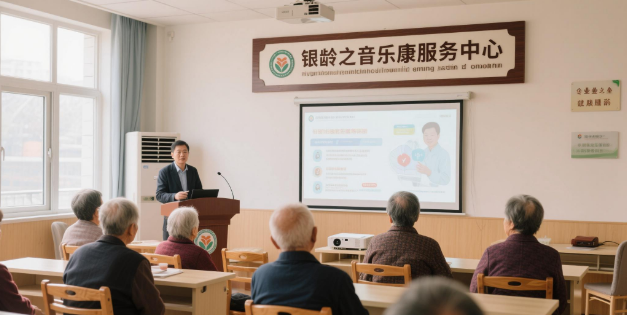
1. Changes in the Elderly Care Industry Amidst the Aging Wave
1. Policy Windfall: Transition from 9073 to Home-Based Elderly Care Paradigm
Policymakers have keenly captured this structural change. The “14th Five-Year Plan for National Aging Cause Development and Elderly Care Service System” released in 2021 clearly proposes a new development framework of “coordinating home, community, and institutional care,” marking a shift from the decade-long “9073” model (90% home care, 7% community care, 3% institutional care) to a more flexible service network. The latest data from the Ministry of Housing and Urban-Rural Development shows that financial subsidies for elderly-friendly renovations reached 21.7 billion yuan in 2023, with 68% directed towards the construction of community embedded service facilities.
2. Upgraded Consumption Driving Layered Service Demand
The wave of consumption upgrading is reshaping the silver economy ecosystem. The “2023 China Private Wealth Report” jointly released by China Merchants Bank and Bain & Company reveals that 39% of high-net-worth individuals (with investable assets exceeding 10 million yuan) are aged 50 and above, with an average willingness to pay of 23,000 yuan per month for high-end elderly communities. In contrast, the National Bureau of Statistics survey shows that the median monthly pension expenditure that urban ordinary retirees can afford is only 3,265 yuan, creating a significant gap in payment capacity that gives rise to a differentiated service supply system.
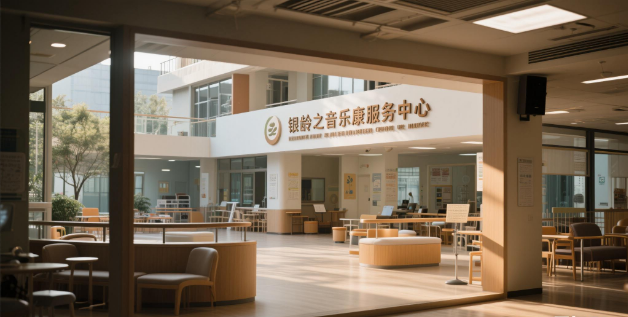
2. Deconstructing the Business Logic of High-End Elderly Communities
1. In-Depth Analysis of Taikang’s CCRC Model
Taikang’s Yanyuan community’s 2023 operational data shows that the average age of residents is 82 years, with an average monthly expenditure of 28,000 yuan, yet 95% of clients’ children express high recognition of the CCRC (Continuing Care Retirement Community) model. This business model, which bundles insurance products with physical services, essentially balances heavy asset investment by locking in customer lifetime value in advance. Its financial statements indicate that membership card sales contributed 62% to the recovery of initial investments, while continuing care services generated 38% of recurring revenue.
2. Capital Operation Path of Real Estate Securitization
The operational secrets of the capital market lie within the REITs structure. A listed elderly community operator disclosed that by securitizing the operating rights of mature projects, its asset turnover rate increased from 0.18 to 0.53. This financial innovation shortened the investment recovery period of individual projects from 12 years to 7 years, but it also brought deep-seated contradictions between service standardization and capital profit-seeking. In 2022, a high-end community faced service quality complaints due to excessive pursuit of bed turnover rates, exposing the inherent risks of this model.
3. Building a Moat through Medical and Health Integration
The ability to integrate medical resources has become a core competitiveness. The elderly medical center co-built by Shanghai Shenyuan Elderly Community and Ruijin Hospital reduced post-acute care costs by 42%, achieving a high retention rate of 91% through this integrated medical and health model. However, experts from the Health Commission point out that currently only 7% of high-end elderly institutions possess genuine medical qualifications, and most so-called “health management” remains at the basic care level.
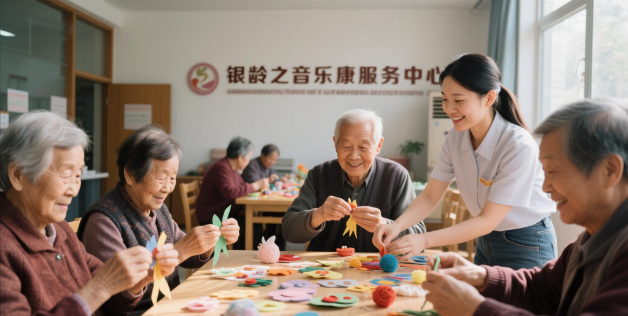
3. Chinese-style Innovation in Community Embedded Services
1. Grid Service Practice of Elderly Stations in Beijing
The network of elderly stations in Jinsong Street, Chaoyang District, Beijing, achieves full coverage of a 15-minute service circle through a “central kitchen + distribution point” model. Its smart management platform data shows that the daily reach of meal assistance services is 2,300 people, with costs reduced by 57% compared to traditional institutional models. This operational logic of “distributed service nodes” is reconstructing the cost function of home-based elderly care.
2. Scene Application Revolution of Smart Elderly Care Terminals
The application of smart terminals is triggering a service scene revolution. A technology company in Hangzhou developed a fall monitoring system that controls the false alarm rate to below 0.3% using millimeter-wave radar technology, with installation costs reduced by 76% compared to traditional solutions. The popularization of such technology is gradually equipping home environments with “invisible nursing station” functions, with the technology empowerment module contributing 32% to efficiency improvements in embedded services in 2023.
3. Activation of Social Capital through Time Bank Mechanism
The practice of the time bank mechanism in Gulou District, Nanjing, reveals a new path for activating social capital. By converting volunteer service time into future care rights, this model attracted 12,000 low-age elderly participants within 18 months, increasing service supply by 340%. However, this intergenerational mutual assistance model faces ongoing challenges, with system data showing that only 23% of stored time was redeemed within three years.
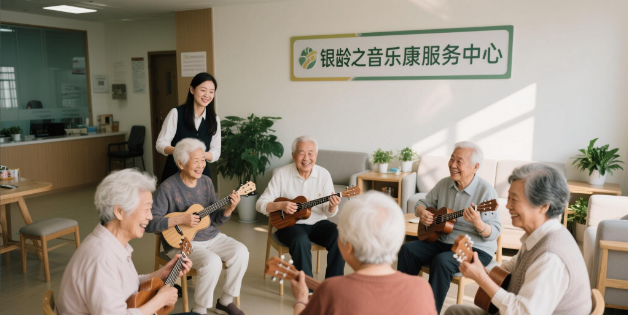
4. Dynamic Game Model of Market Choices
1. Dual Decision Tree of Payment Ability and Emotional Needs
In the decision analysis model of the private client department of a commercial bank in Hangzhou, the choice weight of high-end elderly communities shows significant generational differences. Data indicates that the 60-70 age group prioritizes “medical resource allocation” (weight 37%), while the attention of potential clients under 50 to “social and cultural support” reaches 43%. This divergence in value orientation reflects the essential shift in elderly consumption from survival-oriented to development-oriented.
A survey by Boston Consulting Group reveals an intriguing paradox: among families with a monthly income of over 80,000 yuan, 62% of respondents expressed willingness to pay for high-end community fees, but the actual signing rate is only 28%. In-depth interviews show that emotional costs are a key barrier, with 79% of hesitant individuals worrying that “institutional elderly care will sever family ties.” This psychological resistance has given rise to new product forms, such as a “travel-style elderly care card” launched by a leading insurance company, allowing clients to rotate living in elderly communities across six cities each year, satisfying quality needs while maintaining lifestyle mobility.
The structural gap in payment ability is particularly evident in the Yangtze River Delta region. Research in Suzhou Industrial Park shows that the median elderly care budget for retired senior executives from foreign enterprises reaches 42,000 yuan/month, while local relocated elderly can only afford 6,800 yuan/month. This disparity drives service providers to adopt a “product modularization” strategy, with a certain brand breaking down basic care, cultural activities, and medical care into 21 selectable options, allowing clients to freely combine them into personalized plans.
2. Value Orientation Shift Due to Generational Transition
As the post-90s generation begins to formulate elderly care plans for their parents, the market rules are undergoing fundamental changes. A 2023 survey by JD Health shows that the annual expenditure of individuals under 35 on home elderly care services for their elders has increased by 217%, with “digital management” and “service visualization” accounting for 59% of their decision-making criteria. The rise of these generational agents forces traditional institutions to reconstruct their service systems, with a certain elderly community in Shanghai introducing a family-end app that allows real-time viewing of 145 service data points, increasing the participation of the younger generation by 3.6 times.
Value migration has sparked a wave of innovation in service content. A high-end community in Chaoyang District, Beijing, has opened an “e-sports therapy room,” using age-friendly modified motion-sensing game equipment to extend the emotional stabilization time of dementia patients by 42%. Notably, 38% of respondents from the post-70s generation listed “cultural adaptability of end-of-life care” as a core factor in their choices, prompting a Taiwan-funded institution to introduce religious spaces such as temples and confession rooms to meet spiritual needs.
Generational cognitive dissonance has also led to market friction. Data from the Guangzhou Family Dispute Mediation Center shows that family conflicts related to elderly care choices increased by 78% in 2023, with 64% of conflicts stemming from children favoring institutional care while parents insist on home care. This tension is giving rise to transitional products, such as a “satellite-style elderly care apartment” launched by a real estate company, allowing elderly individuals to live independently in the community while sharing the medical resources of the main institution.
3. Differentiated Layout under Regional Economic Gradients
The elderly care industry map of the Guangdong-Hong Kong-Macao Greater Bay Area reveals a clear gradient layout pattern. High-end elderly communities in Qianhai, Shenzhen, charge an average of 58,000 yuan/month, with cutting-edge facilities such as stem cell treatment centers; Dongguan focuses on the “retired workforce of the intelligent manufacturing industry,” developing characteristic elderly communities that integrate industrial museums and vocational training rooms; Jiangmen, leveraging its overseas Chinese hometown advantage, promotes “cross-border migratory elderly care,” with its overseas service network covering 13 countries.
In the Chengdu-Chongqing economic circle, a unique model of inclusive elderly care led by state-owned enterprises is forming. A certain health group in Chongqing has transformed an abandoned workers’ sanatorium into a layered elderly community through a PPP model, controlling the basic bed fee at 2,800 yuan/month while setting up a high-end care area (18,000 yuan/month) for cross-subsidization. This “tiered” supply system maintains an overall project profit margin at a sustainable level of 8.3%.
The awakening of county markets is bringing new growth poles. The bamboo forest elderly community in Anji, Zhejiang, attracts retired individuals from Shanghai for seasonal living by transforming idle farmhouses into health care courtyards, with its “labor-for-accommodation” model reducing operational costs by 34%. Monitoring data from the National Rural Revitalization Bureau shows that such farm-care integration projects drove a 89% increase in county-level elderly care industry investment in 2023.
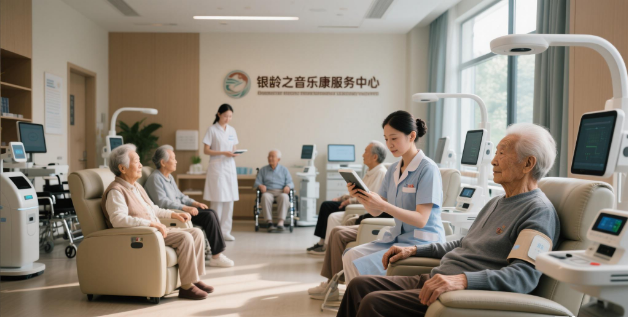
5. Future Outlook on Industry Integration
1. Light Asset Transformation Driven by REITs (Real Estate Investment Trusts) Model
The performance of the first batch of elderly care REITs upon listing has validated the enthusiasm of the capital market. The Ping An Yinian REIT saw a 19% increase on its first day of trading, with its underlying asset package including the operating rights of three mature communities. Actuarial models indicate that when the occupancy rate exceeds 75%, REIT investors can achieve an annualized return of 6.8%, prompting developers to accelerate the securitization process of existing projects. However, potential risks are accumulating, as a certain REIT project was forced to increase bed turnover rates due to excessive yield commitments, leading to a 21% drop in service quality ratings.
The boundaries of light asset operations are expanding. A leading elderly care brand has launched a “management output” model, shortening the cultivation period of new projects to 11 months by dispatching core teams to share revenue. Its standardized system includes 427 service processes and 89 quality control nodes, ensuring brand premium capability. However, this model faces local adaptability challenges, as customer satisfaction dropped by 17% in a southwestern project due to cultural differences in diet.
2. Age-Friendly Renovation of Dementia-Friendly Communities
The localization of Japanese experiences is showing results. A dementia-specialized community in Shanghai has adopted the “unit care” concept, breaking down public spaces into eight themed living areas, reducing the incidence of abnormal behavior in patients by 53%. Environmental design details incorporate technological wisdom: corridor flooring includes BeiDou positioning chips for real-time gait monitoring; dining tables hide pressure sensors to alert swallowing difficulty risks.
Non-drug intervention therapies are opening new blue oceans. An institution in Chengdu has developed a “virtual reality nostalgia therapy,” reconstructing a digital twin of 1950s street scenes, improving short-term memory test scores of moderate dementia patients by 29%. More cutting-edge explorations are underway in laboratories, with a team from the Chinese Academy of Sciences developing a neural modulation helmet that improves spatial orientation ability by 41% through targeted electromagnetic stimulation.
3. Ethical Boundaries of AI Nursing Robots
Breakthroughs in emotional computing technology are reshaping service scenarios. A technology company has launched a fourth-generation companion robot that accurately captures 87% of emotional fluctuation signals through micro-expression recognition and voiceprint analysis. In a pilot community in Nanjing, these robots provide emotional companionship to elderly individuals living alone at night, reducing the incidence of depression by 38%. However, ethical controversies arise, with 42% of surveyed family members opposing robots participating in end-of-life care scenarios.
The critical point of technological substitution is causing industry anxiety. Cost accounting from a certain elderly care institution in Shenzhen shows that after introducing AI cleaning robots, logistics personnel were reduced by 43%, but the resulting decline in service warmth led to a 15% drop in renewal rates. This contradiction has given rise to new standards for “human-machine collaboration,” with a provincial regulation requiring that key nursing processes must retain human intervention channels.
Risks in the legal vacuum are becoming apparent. The first case of “injury caused by nursing robot negligence” accepted by the Beijing Internet Court exposes the complexity of responsibility determination. The algorithm decision log of the involved robot shows that it prioritized protecting its own equipment when avoiding obstacles, raising deep discussions about machine ethics.
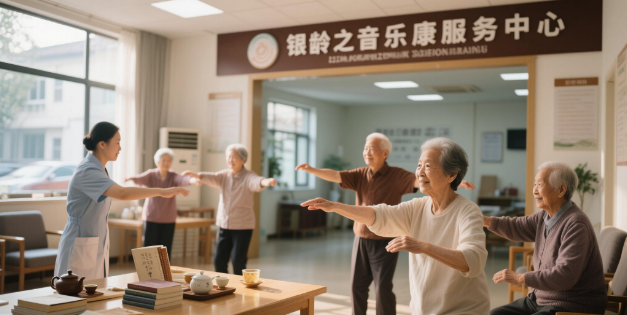
Conclusion: Ecological Reconstruction of the Silver Economy
As the shimmering pool of high-end elderly communities intertwines with the medicinal aroma of community stations in the urbanization process, China’s elderly care industry is undergoing profound changes on the supply side. Data shows that the elderly care market scale reached 9.8 trillion yuan in 2023, but structural contradictions remain prominent: there is a 28% oversupply in the high-end market, while there is still a shortfall of 3.4 million beds in inclusive services. Behind this imbalance are multiple struggles of payment capacity stratification, cultural cognitive differences, and the rate of technological penetration.
The future breakthrough may lie in establishing a dynamic equilibrium mechanism. By revitalizing existing assets through REITs financial tools, achieving precise service reach through AIOT technology, and using intergenerational integration design to eliminate emotional barriers, China’s elderly care industry is writing a uniquely characteristic development paradigm. As the post-80s generation begins to face their parents’ elderly care choices and the post-90s generation starts their own elderly care savings, this industry, which concerns everyone’s ultimate destination, is destined to continue evolving amidst the tension between technological innovation and humanistic care.
Written by: @Qianmo
Edited by: @Momo
 When the ‘Silver Wave’ knocks on the door: We are all the tide chasers of the times – A national response to Chinese-style elderly care Notice from the Ministry of Civil Affairs, National Aging Office, and China Aging Association on promoting the use of the “Silver Age Action” logo, flag, slogan, and promotional language Understanding of life from two civilizations: The warmth built by details is weaving the safety net of China’s aging society Breaking the cocoon: The rebirth and reconstruction of the spiritual world of the new era’s silver age
When the ‘Silver Wave’ knocks on the door: We are all the tide chasers of the times – A national response to Chinese-style elderly care Notice from the Ministry of Civil Affairs, National Aging Office, and China Aging Association on promoting the use of the “Silver Age Action” logo, flag, slogan, and promotional language Understanding of life from two civilizations: The warmth built by details is weaving the safety net of China’s aging society Breaking the cocoon: The rebirth and reconstruction of the spiritual world of the new era’s silver age